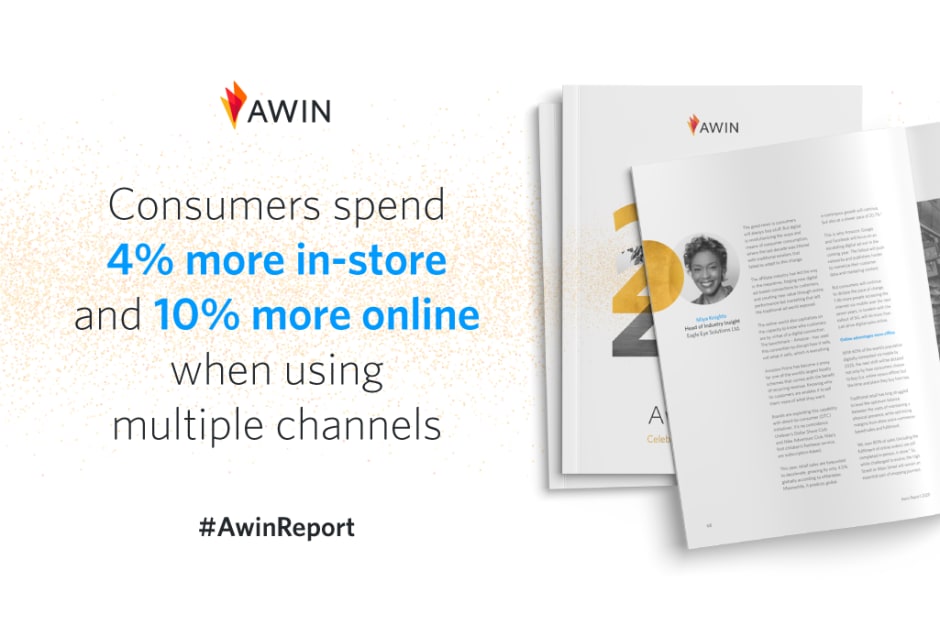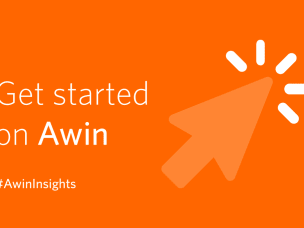Capitalizing on digital and physical convergence
Written by Miya Knights on 5 minute read
In this year’s Awin Report, Miya Knights, Head of Industry Insights at Eagle Eye Solutions, shares her thoughts on making the most of an omnichannel approach.

The good news is that consumers will always buy stuff. But digital is revolutionizing the ways and means of their consumption, where the last decade was littered with traditional retailers who failed to adapt to this change.
The affiliate industry has led the way in the meantime, forging new digital ad-based connections to customers and creating new value through online performance-led marketing that left the traditional ad world exposed.
The online world also capitalizes on the capacity to know who customers are by virtue of a digital connection. The benchmark, Amazon, has used this connection to disrupt how it sells, not what it sells, which is everything.
So, Amazon Prime has become a proxy for one of the world’s largest loyalty schemes that comes with the benefit of recurring revenue. Knowing who its customers are enables Amazon to sell them more of what they want.
Brands are exploiting this capability with direct-to-consumer (DTC) initiatives. It’s no coincidence that Unilever’s Dollar Shave Club and Nike Adventure Club, Nike's first children’s footwear service, are subscription-based.
As we look ahead in 2020, retail sales are forecast to decelerate, growing by only 4.5% globally according to eMarketer. Meanwhile, it predicts global ecommerce growth will continue, but also at a slower pace of 20.7%.
This is why Amazon, Google and Facebook will focus on an escalating digital ad war in the coming year. The fallout will push networks and publishers harder to monetize their customer data and marketing content.
But consumers will continue to dictate the pace of change. 1.4bn more people accessing the internet via mobile over the next seven years, in tandem with the rollout of 5G, will not only drive digital sales online.
Online advantages move offline
With 60% of the world’s population digitally connected via mobile by 2025, the next shift will be dictated not only by how consumers choose to buy, i.e. online versus offline, but the time and place they buy from too.
Traditional retail has long struggled to find the optimum balance between the costs of maintaining a physical presence, while optimizing margins from store and ecommerce-based sales and fulfillment.
Yet, over 80% of sales (including the fulfillment of online orders) are still completed in person, in store. So, while challenged to evolve, the retail store will remain an essential part of shopping journeys.
The growing value of digital connections to people, places and things is leading to an inevitable mix of offline and online marketing channels informing consumer shopping journeys. Tracking this in real time will be key.
Online growth has, to date, caused an increasing need to extend digital customer connections into the physical world. The next decade’s performance marketing opportunity lies with those enabling this convergence.
Research has shown omnichannel customers, who shop online and in stores, spend 4% more in store and 10% more online when compared to single-channel shoppers. Understanding their path-to-purchase is essential.
It’s no surprise then that Amazon is as keen to get into grocery stores as it is the digital ad space or even healthcare. Walmart is exploiting its store base to compete on rapid fulfilment. Retail is converging.
When it does, the results are compelling. Many large retailers have initiated or doubled down on loyalty investments that tie digital, often loyalty, customer IDs to link sales and marketing activity online and in store.
Closing the attribution gap
But, few pure-plays opening stores or retailers moving online can scale loyalty or subscription offers to gain visibility of their best customers. They need a performance marketing connection at the physical point of sale.
Performance marketing traffic dominates online only because the tracking of online spend in store is difficult to track and attribute commission between affiliates and retail advertisers. But the offline prize is huge.
The industry average conversion rate for an affiliate link click to purchase seems to be around 5%. Digital mobile promotions can deliver up to 58% redemptions a month, attributable back to a sale and possible ID.
That’s the rate at which the 2m mobile app users redeemed offers that Eagle Eye’s clients used to engage with them via its performance marketing platform and connection with their point of sale, both online and in store.
Real-time tracking of an individual promotion or reward from issuance through redemption at checkout using unique codes for clear attribution enables Eagle Eye to facilitate the use of cookies in the offline world.
Offline, this offers huge opportunity to monetize digital customer marketing engagement before, during and after a visit, and can contribute to retail growth by driving more sales and traffic in store.
Retailers can also create channel-siloed customer views to personalize shopping journeys to and in the store, scaling engagement via online channels and networks to further monetize above-the-line and digital content.
Online, this convergence represents the next performance marketing frontier: unleashing the power of digital on more than just 20% of retail sales to establish offline connections capable of driving more valuable traffic.
For more industry insights and trends, download the Awin Report 2020 for free here.



